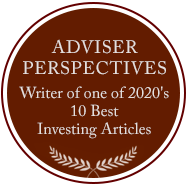CURRENCY AS AN ASSET CLASS
29 November 2004, Altegris Investments
If you haven’t been to Paris for a while, you may be surprised when the concierge at the hotel you stayed just a few years back tells you that room rates have gone up from $250 to $400. “How can that be?” you may respond inquisitively. “Mais monsieur, the rent is still €300–the same as it was at when you were with us in 2002. It’s your dollar that has changed since you were last here.”
This speaks of the power of foreign exchange.
Of course, exchange rate volatility is a two-way street. While US travelers may be feeling the pinch now, between the time the euro was introduced in 1999 and spring of 2001, they experienced a 28 percent increse in their purchasing power across the eurozone as the new currency collapsed right out of the gate.1
But one doesn’t need to cross the ocean to participate in the foreign-exchange markets. Currency trading is a 24/7, 365-day-a-year global operation. Foreign exchange represents the largest market on earth with daily trades now reaching $1.9 trillion.2 Moreover, it’s proving to be among the most intriguing alternative asset classes around because of its tremendous liquidity. Spreads on trades can often be more efficient than they are with stocks and bonds. And many money managers have shown that seeking, rather than avoiding, currency exposure can enhance portfolio performance.3
“Long-term active currency returns are driven by a range of economic factors that differ from those affecting equity and bond returns,” observes Iain Lindsay, executive director and head of global fixed income and currency products management at Goldman Sachs Asset Management. “Accordingly, they tend to have a low correlation with traditional investments while historically generating positive excess returns.”
But for the average investor who knows next to nothing about foreign exchange, currency traders are something more akin to Ghengis Khan in pinstripes rather than a Peter Lynchian approach to sound, long-term investing.
The impression that currency trading is a form of capitalist warfare practiced only in the rarified air of the ultra-high net worth is certainly reinforced by such events as when George Soros made a billion dollars trading sterling in the early 1990s or was accused of killing Southeast Asian markets several years later by successfully shorting the region’s currencies.
In fact, currency investing is evolving into its own asset class and is becoming a part of effectively diversified money management. Foreign exchange trading is a highly disciplined process that exploits the constant shifts in cross rates. Fundamentally, it’s rooted in basic factors such as the comparative health of one country’s economy versus another, interest rate differentials, capital flows across borders, and political and policy stability.
But most trading programs are based on rigid technical analysis. The vast majority of managers these days rely on systematic trading that triggers buys and sells based on changing prices, volumes, and other key parameters. Although discretionary trading does have potential advantages, systematic trading attempts to eliminate so-called “gut” moves associated with day-to-day decision making by automatically trading out of positions when an investment breaks down past a pre-set limit. This is designed to restrict the degree of losses while permitting profitable positions to run. Of course, there can be no guarantee that any trading program, whether systematic or discretionary, will generate profits or avoid losses.
The reason why investors pursue profits in the foreign exchange markets is because of several basic differences that distinguish currencies from all other commodities and securities. First, as Jeremy O’Friel, director of the Dublin-based Appleton Capital Management explains, “a currency doesn’t have an inherent, absolute value; its value is constantly in flux, relative to other currencies.”
Second, unlike most other markets where investments are made to make money, 80 to 90 percent of all currency trades are made by multinationals, central banks, investment managers, and tourist-related activities simply looking to lock into existing foreign exchange rates.4
“Because most currency buyers are not seeking to profit from exchange rates,” observes Gary Klopfenstein, senior managing director at Mesirow Financial Investment Management, who specializes in currency overlays and investing, “they are indifferent to the trends which their investments collectively are driving. Identifying and latching onto these trends is what enables the shrewd currency investor to potentially profit.” And traders are able profit from virtually any trend because they have the ability to go long or short dozens of cross rates.
And third, although never a guarantee, there are techniques to potentially limit downside risk. For example, managers can control their degree of leverage and can set very quick stops designed to allow them to get out of a trade that reverses course on them. They also can potentially generate income by keeping a sizable portion of their assets in Treasuries to protect against margin calls.
As O’Friel aptly puts it, “there’s the perception, that investing in foreign exchange is like climbing behind the wheel of a Ferrari—while some may tear about, it can also be driven at 30 miles per hour.”
Shifting Rates
Let’s look at a historic example of how shifting rates impact trades in the foreign exchange markets. Of course, hindsight is 20/20, and past performance of any investment is not an indication of future results. But given this, looking at key exchange rates over the past two years [from November 29, 2002 through November 29, 2004] one can see that through buying a host of foreign currencies [read: shorting the dollar], some currency investors were able to benefit from the weakening greenback.5
Euro-US dollar [the value of one euro in dollar terms] appreciated from $0.995 to $1.328. That means if one had taken a long position in the euro, its value would have increased by over one third due to underlying currency appreciation. Against the British pound, dollar-sterling [the value of one pound in dollar terms] appreciated from $1.553 to $1.893, a gain of nearly 22 percent. And yen-dollar [the value of one dollar in yen terms] moved from ¥122.23 to ¥102.69, a nearly 16 percent gain in the value of the yen versus the dollar.
Even better results were netted by investors who shorted the US dollar against second-tier currencies. The South African rand, New Zealand dollar, Australian dollar, and Canadian dollar–known as commodity currencies because of their economies’ dependence on various natural resources–appreciated over the past two years by 37, 31 29, and 25 percent, respectively, against the dollar.
But traders also profited from bets on cross rates not involving the dollar. During the last two years, the euro gained 8.6 percent against the pound and 12.3 percent against the yen. In September, O’Friel says, going long Canadian dollar and short yen was one of his firm’s best investments made so far in 2004.
Of course, investors must be careful – we should remind ourselves that in any of the above examples, taking the opposite side of the trade would have resulted in a loss.
Basic Investment Tools
There are several simple means for sophisticated investors to gain foreign currency exposure, such as buying ADRs of foreign companies.
To avoid equity risks, investors could instead purchase fixed-income securities, such as AAA-rated sovereigns, multinationals, supranationals, and foreign bonds. Foreign certificates of deposits can be purchased here in the states denominated in a wide variety of currencies, and savings accounts can be established with overseas banks.
Unhedged international mutual funds offer investors an opportunity to be long a basket of currencies, while specific currency exposure can be gained by locking into single country funds. Since exchange-traded funds can be shorted, they can provide long dollar positions as well.
An increasing number of investors are turning to commodity trading advisors, who specialize in foreign currency trading, and to hedge funds that strategically utilize foreign exchange to diversify and potentially enhance portfolio performance. While hedge funds pretty much remain in the domain of the high net worth, major brokerages are increasingly offering access to CTAs with minimums as low as $5,000, albeit with high fees.
Both hedge funds and CTAs rely on currency forwards and futures, which enable margin trades that can generate various degrees of leverage. They are marked to market daily, exposing investors to vast upside and downside liability.
Forwards are customizable Interbank-traded contracts, typically $1 million-plus in size, between two parties that can last from several days to a year and beyond. Future contracts are over-the-counter agreements between two currencies that trade on various commodity exchanges in units of $125k. The Chicago Mercantile Exchange, for example, trades 17 different currencies, involving 34 different cross-rates.
What Then to Do
As the more sophisticated FX investment tools suggests, currency investing isn’t for amateurs. A bet can go wrong very easily and if it isn’t monitored constantly and properely, it can become a very costly investment. Mere suggestion of joint government intervention to defend a currency, for example, could send traders scurrying and halt its sell off.
That said, investors thinking about currency as an investment may be encouraged from news coming out of Omaha, Nebraska when Warren Buffet, one of the most cautious and level-headed investors, revealed he was establishing significant short positions against the dollar. As of Septmber 30, 2004, Berkshire Hathaway held $20 billion worth of forward contracts in eight currencies, up $1 billion from the previous quarter. As of mid November, the firm was sitting on $412 million in pre-tax gains.6
Explaining his long-term view toward investing against the dollar, Buffet posits, “I have no idea what currencies are going to do next week or next month or even next year. But I think I know where they are going over time.”7
“Driven by ever-widening record trade and budgetary deficits, coupled with the fact that the US must attract more than 80 percent of the world’s net export capital to finance these deficits, we believe that the dollar is in a long-term secular down turn,” says Chuck Butler, president of Everbank World Markets in St. Louis, which offers retail investors extensive means of investing in various currencies. “And when a man like Buffet decides to join the trend, then that tells us something.”
But whether the dollar weakens or strengthens, managers can potentially profit if they can discern a specific direction in which a currency is heading. “Exchange rates, even between two industrialized countries with healthy economies,” explains foreign exchange advisor and author Rudi Weisweiller, “can move against each other by ten or twenty percent in a year. And they can move right back again within a few weeks.”
This is one of the essential appeals of currency as an investment: regardless of what stock and bond markets are doing, there remains the potential for money to be made through disciplined positioning in the currency markets. The key is to understand the risks, closely scrutinize every investment opportunity, and carefully select a proven foreign exchange advisor to help guide you through this challenging and potentially profitable asset class.
2 “Triennial Central Bank Survey of Foreign Exchange and Derivative Market Activity in April 2004,” Monetary & Economic Department, Bank for International Settlements, September 2004, p. 1.
3 Ian Lindsay & Scott Arnott, “Cirrency: AN Untapped Alpha Source,” Goldman Sachs Asset Management, June 2004, p. 4.
4 Gary Klopfenstein, senior managing director, Mesirow Financial Investment Management. Interview with author.
5 www.oanda.com/convert/fxhistory
6 Berkshire Hathaway Quarterly Report, 30 September 2004, as reported in Chuck Butler, “A Pfenning for your Thought,” Everbank World Markets, 12 November 2004.
7 Ibid.



 GIR's Investing in the New Europe
GIR's Investing in the New Europe



